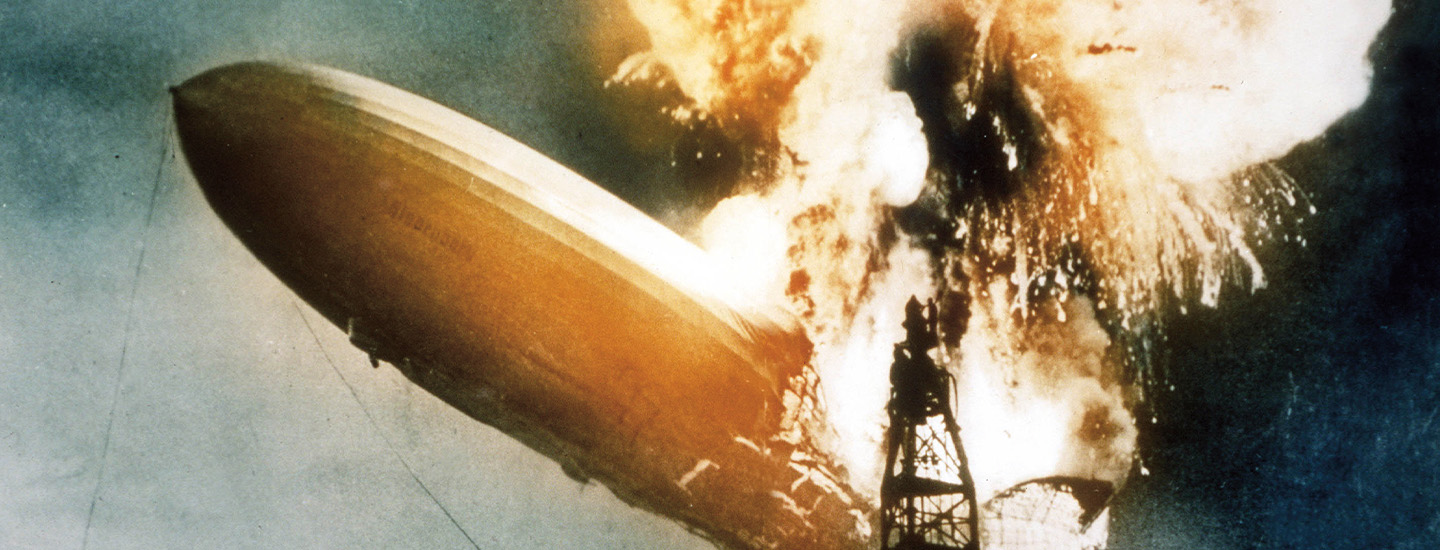AP Images (Werner Franz)
Werner Franz
On the evening of May 6, 1937, Werner Franz felt like the luckiest kid on Earth.
Werner, 14, worked on a zeppelin called the Hindenburg. Zeppelins were large floating airships without wings. In the 1920s and 1930s, these flying machines ruled the skies. Tens of thousands of people traveled on them. Millions more wished they could.
No zeppelin was as grand as the Hindenburg. It was the biggest, fastest, safest passenger aircraft ever built. It made trips between Germany and America.
Werner grew up in Germany. That’s where the Hindenburg was built. The 1930s were dangerous years there. The country’s leader, Adolf Hitler, was scaring people with his hateful ideas. Many people feared he would soon start a war. Millions were out of work, including Werner’s father.
But the Hindenburg was something Germans could be proud of.
At 13, Werner left school. He had to work to help his family. He was lucky to get a job on the Hindenburg. Each trip took him far from Germany’s troubles.
Little did he know that his adventure would end in tragedy.
It was May 6, 1937. Werner Franz felt like the luckiest kid on Earth.
Werner was 14. He worked on a zeppelin called the Hindenburg. Zeppelins were large airships without wings. In the 1920s and 1930s, they ruled the skies. Tens of thousands of people traveled on them. Millions more wished they could.
The Hindenburg was special. It was the biggest, fastest, safest passenger aircraft ever built. It flew between Germany and America.
Werner lived in Germany. That’s where the Hindenburg was built. The 1930s were dangerous years there. The country’s leader, Adolf Hitler, was scaring people. He had hateful ideas. People feared he would start a war. Millions were out of work. Werner’s dad was one of them.
But the Hindenburg was something Germans could be proud of.
At 13, Werner left school. He had to work. His family needed money. He liked his job on the Hindenburg. It took him far from Germany’s troubles.
His adventure would end in tragedy. But he didn’t know that.
On the evening of May 6, 1937, Werner Franz felt like the luckiest kid on Earth.
Werner, 14, worked on a zeppelin—a large floating airship without wings—called the Hindenburg. In the 1920s and 1930s, zeppelins ruled the skies. Tens of thousands of people traveled on them, and millions of others wished they could.
No zeppelin was as grand as the Hindenburg. It was the biggest, fastest, safest passenger aircraft ever built. It made trips between Germany and America.
Werner grew up in Germany, where the Hindenburg was built. The 1930s were dangerous years there. The country’s leader, Adolf Hitler, was frightening people with his hateful ideas. Many people feared he would soon start a war. Millions were unemployed, including Werner’s father.
But the Hindenburg was something Germans could be proud of.
At 13, Werner left school so that he could work to help his family. He was fortunate to get a job on the Hindenburg, where each trip took him far from Germany’s troubles.
Little did he know that his adventure would end in tragedy.

